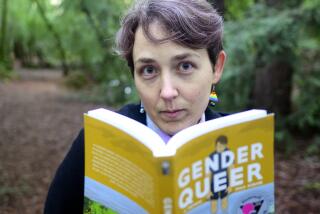What is Mexcellent? Let Enrique Garcia Naranjo explain
Late-night cruise down South 12th, stereo bumping “Forever Written” by Combine Vibes, and I’m on my way to eat tacos de tripas. Tonight I’m planting myself at Tacos Apson, named after the 1960s Mexican rock ‘n’ roll outfit of the same name. The spot is pinnacle Southside Mexcellence — equal parts Mexican and excellent. After I place my order, I take a seat outside and enjoy the evening stars over Southside Tucson. Across from the restaurant, I see the blue gates of Pueblo Magnet High School, my alma mater. I eat my tacos and look closely at the school. Within its walls, I found poetry.
Growing up in an immigrant, Spanish-speaking household, we didn’t have much literature on our bookshelves: We had books on Mexican history, the Holy Bible and an English dictionary. My father would use the dictionary to check the gringos at work who he said used bigger words to sound smarter around him. So between Bible verses, arbitrary facts about Mexico’s presidents and words too big for my small Chicano lips, I was not at all interested in picking up a reading habit.
When I entered my sophomore year of high school, my world literature teacher, Ms. Sarah Wilson, assigned us Leslie Marmon Silko’s “Ceremony.” In this book, I saw reflections of myself, of my family and friends, of Brown faces that were already all too familiar to me. Ceremony led me to Ralph Ellison’s “Invisible Man,” which led me to Gloria Anzaldúa’s “Borderlands.” These books formed my identity as a fronterizo, a child of the hyphen between Mexican and American. For the first time I was learning that my histories, and that of my ancestors’, were part of U.S. history.
I became an active participant in the Tucson Youth Poetry Slam, or TYPS, a competitive poetry reading series for high schoolers from across the region. I began writing and performing poems about mi raza, my family, my community and myself. Inspired by Anzaldúa and León de la Rosa, I write my poetry in Spanglish to capture the tongue-dance of my upbringing.
With a newfound appreciation for literature and a constant evolution of ideas about identity and history, my poetry became an outlet for all the emotions I never had words for. Thanks to the TYPS and its mother organization Spoken Futures, I read my poems across Arizona and have read in spaces where poetry had previously been unthought of. In 2012, this included a school board candidate forum.
The Tucson Unified School District had stopped sending school buses to pick up students attending Pueblo without warning the community. Students forced to walk or take public transportation were showing up late to class and being penalized.
I was a part of Pueblo High’s Movimiento Estudiantil Chicana/o de Aztlán, or MEChA, chapter, and we organized a forum about the inequity of transportation for Southside schools in Tucson. We invited school board members and candidates running for school board seats. To no surprise, the incumbent members declined our invitation, but all of the candidates running were in attendance. Before we started the forum, I performed a bilingual poem about the history of segregation and inequality in Tucson’s education system. Three months later, two of the candidates were elected as board members — and yellow buses returned to Pueblo.
In 2014, a year after I graduated, I published my first collection of poetry, “Tortoise Boy Says,” with Spoken Futures Press. It’s a culmination of my experiences as a young Chicano navigating the spectrums of identity and language in Arizona. I believe in the importance of empowering youth to find their voices and stories, this act is survival and resistance — it certainly was for me.
Especially now, in a moment in time where politicians and public figures like Donald Trump and Maricopa County Sheriff Joe Arpaio are speaking to the deeply rooted racist and sexist sentiments of the U.S.’ white power structure. Platforms for marginalized voices are more important than ever to add depth to what it means to be an American.
There is urgency in the poems written by black, brown, native, Asian, undocumented, queer and trans writers that cannot be understood without first recognizing why we are standing up, writing and performing: We are — and have been — done with being passive recipients of cultural and physical violence simply because of our bodies and experiences. Coming of age in Arizona, where racist legislation has targeted the Mexican and Chicana/o community, the talk of deportations and 50-foot border walls is nothing new.
Thinking about my experience as a young poet of color, I understand how important my occupancy in literary and cultural spaces is, but I recognize that I am a cis-gendered, able-bodied, heterosexual Chicano. If I in turn failed to recognize who’s not in the room, I repeat the cycle of erasure. Hence this continual work to amplify voices that have gone unheard — just as mine was in my early teens. In solidarity with Black Lives Matter and Ni Una Mas, movements that demand the rehumanization of people stripped of their essence, I acknowledge the miraculous nature of being brown and proud and loud, of being Mexcellent, of being alive and thriving with poems rolling off my tongue like prayers.
Enrique García Naranjo is a 21-year-old poet, performer and pocho from Tucson. He is a Tucson Youth Poetry Slam alumnus and a Spoken Futures INC staff member. His work has been published by and included in the Acentos Review, Brown, Proud y Loud Zine, Sunday Kinfolk and more. Recently, García Naranjo finished his third Borderlands Theatre production, ‘“The Ghosts of Lote Bravo” by Hilary Bettis. Between reading and performing, García Naranjo can be found crate digging for vinyl to sample.
More to Read
Sign up for our Book Club newsletter
Get the latest news, events and more from the Los Angeles Times Book Club, and help us get L.A. reading and talking.
You may occasionally receive promotional content from the Los Angeles Times.







